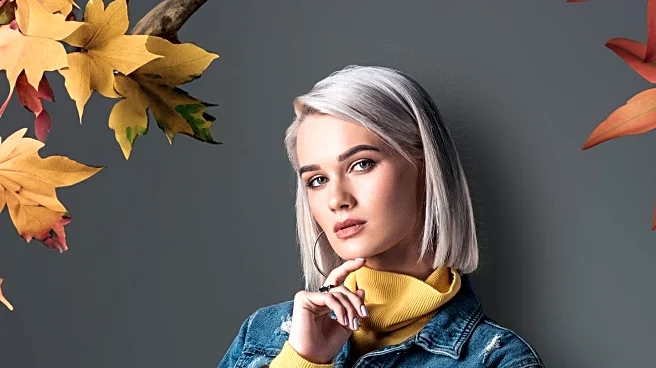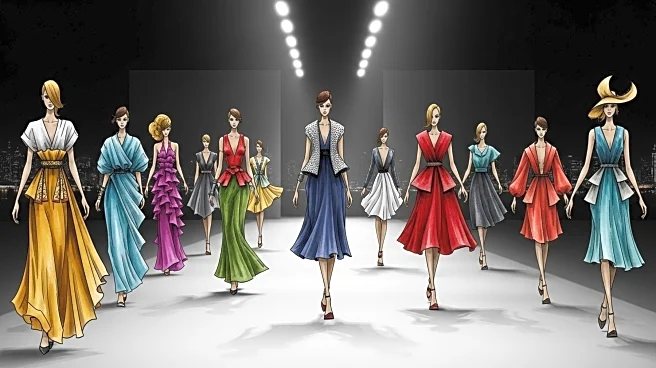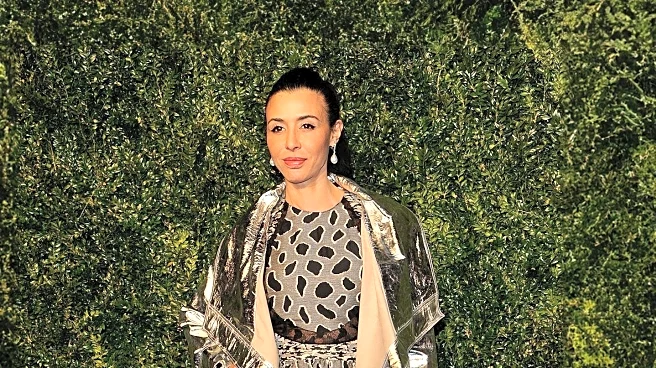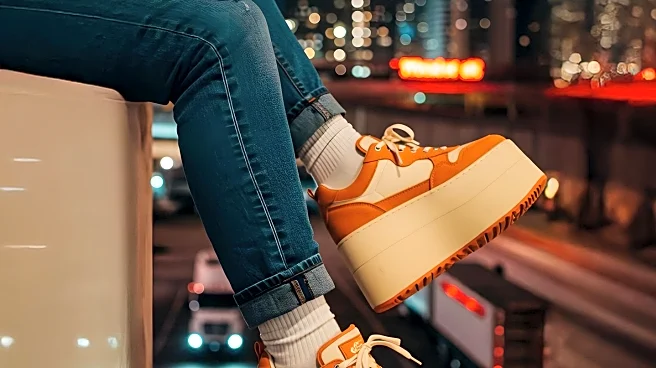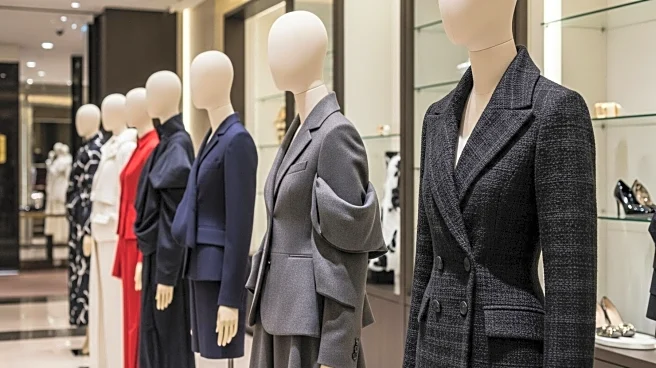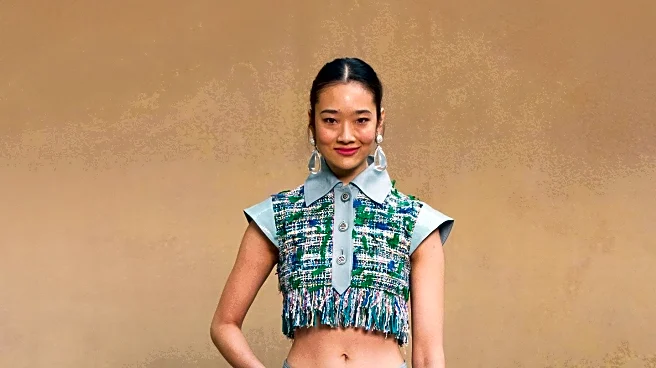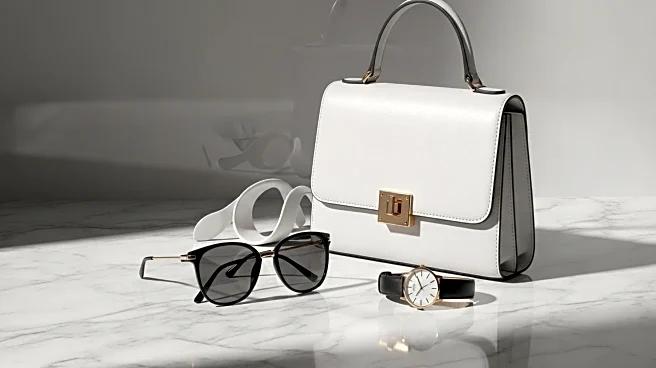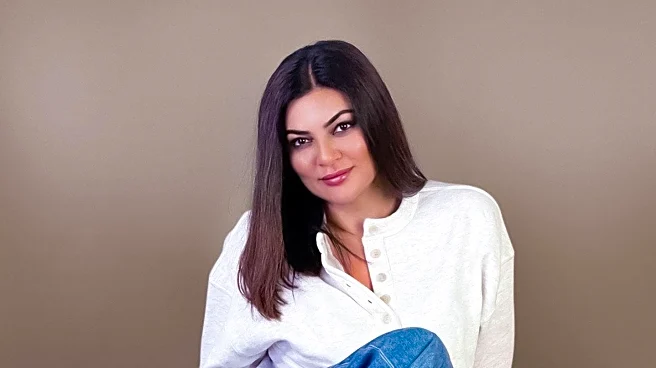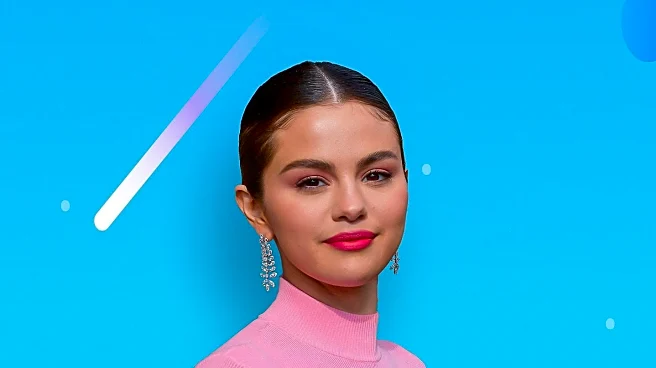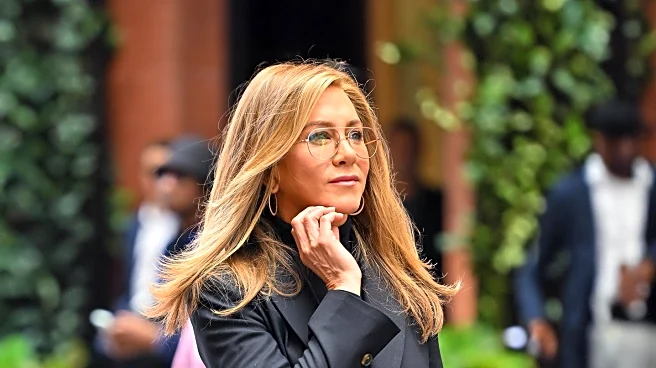What's Happening?
The fashion industry is embracing the spirit of fall with a focus on autumnal color palettes. This season, designers are showcasing outfits that incorporate rich hues such as burnt orange, burgundy, hunter green, and crimson apple red. These colors are reflected in various clothing items, including turtleneck sweaters, suede blazers, and lace-trimmed silk skirts. The transition from summer to fall is marked by a shift in both texture and color, with outfits designed to match the richness of the surrounding landscape. Key pieces include Gabriela Hearst's ribbed cashmere turtleneck sweater paired with wide-leg corduroys and Banana Republic's suede top coat, as well as Massimo Dutti's suede leather blazer combined with light-wash denim and Autry suede sneakers.
Why It's Important?
The emphasis on autumnal colors in fashion highlights the industry's ability to adapt to seasonal changes and consumer preferences. By focusing on rich, vibrant hues, designers are tapping into the emotional and aesthetic appeal of fall, which can drive consumer interest and sales. This trend also reflects a broader cultural appreciation for the changing seasons and the natural beauty associated with fall. As consumers seek to update their wardrobes, the fashion industry stands to benefit from increased demand for seasonal clothing, potentially boosting retail sales and influencing fashion trends globally.
What's Next?
As the fall season progresses, fashion brands are likely to continue exploring new ways to incorporate autumnal colors into their collections. This may include collaborations with designers to create exclusive pieces or expanding product lines to include more diverse color options. Retailers might also focus on marketing campaigns that emphasize the seasonal transition and the emotional connection to fall colors. Additionally, fashion shows and events could highlight these trends, further solidifying their place in the industry and influencing consumer choices.
Beyond the Headlines
The focus on autumnal colors in fashion may also have implications for sustainable practices within the industry. As designers seek to align their collections with natural themes, there could be a push towards using eco-friendly materials and production methods. This shift could encourage consumers to consider the environmental impact of their clothing choices, potentially leading to a greater demand for sustainable fashion. Furthermore, the cultural significance of fall colors might inspire other creative industries, such as interior design and art, to incorporate similar themes into their work.
